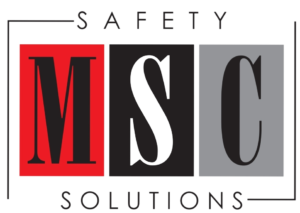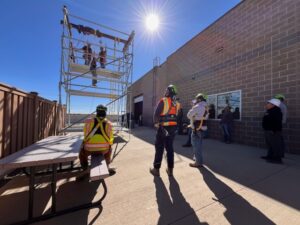
Construction is one of the most hazardous industries, with workers facing risks such as falls, electrocutions, and heavy machinery accidents daily. Proper safety training is crucial in minimizing these dangers and ensuring that workers understand how to protect themselves and their coworkers. While online training has gained popularity for its convenience and accessibility, in-person construction safety training, especially when conducted by a third-party trainer, remains the superior choice for companies looking to maximize value for several reasons.
these dangers and ensuring that workers understand how to protect themselves and their coworkers. While online training has gained popularity for its convenience and accessibility, in-person construction safety training, especially when conducted by a third-party trainer, remains the superior choice for companies looking to maximize value for several reasons.
- Higher Return on Investment (ROI) Through Reduced Accidents
One of the biggest financial benefits of using a third-party trainer for in-person training is the reduction in workplace accidents. Hands-on training from industry experts leads to better knowledge retention and proper application of safety protocols, which directly decreases the number of incidents. Fewer accidents mean lower workers’ compensation costs, reduced liability, and less downtime due to injuries, all of which contribute to significant cost savings for a company.
- Expert Knowledge and Industry Best Practices
Third-party trainers bring specialized expertise and up-to-date knowledge of industry regulations, best practices, and emerging risks. Their experience in multiple job sites allows them to provide real-world insights that in-house trainers or online programs might not cover. This expertise ensures that workers receive the highest quality training that meets or exceeds regulatory requirements.
- Stronger Compliance with Regulations
Many regulatory bodies, such as the Occupational Safety and Health Administration (OSHA), mandate hands-on safety training for certain hazardous tasks. Third-party trainers ensure compliance with these
standards by providing physical demonstrations and practical assessments that online courses often lack. Avoiding fines and legal issues due to non-compliance saves companies money and protects their reputation.
- Better Employee Engagement and Retention
Companies that invest in high-quality, face-to-face training show employees that their safety is a value and a priority. This commitment fosters a sense of trust and loyalty among workers, reducing turnover rates. Employees who feel valued and well-trained are more likely to stay with the company, lowering recruitment and onboarding costs associated with frequent workforce changes.
In-person training fosters collaboration among workers, creating a shared understanding of safety protocols. This team-oriented approach builds a safety culture where employees look out for one another, reducing unsafe behaviors. Better communication also means that workers are more likely to report hazards and work together to maintain a safer job site.
- Customized Training for Specific Job Sites and Risks
Every construction project presents unique safety challenges. Third-party trainers can tailor in-person training to address site-specific risks,
- Enhanced Teamwork and Communication
ensuring workers are well-prepared for their specific environments. Online training, being more generalized, may not cover the nuances of a particular job site, leaving workers underprepared for potential hazards.
- Greater Accountability and Certification Integrity
A major issue with online training is the potential for employees to skip through modules, rush through exams, or even have someone else complete the course for them. In-person training eliminates these risks by requiring active participation, ensuring that every worker genuinely understands and applies safety principles. This accountability helps companies maintain high standards of workplace safety and competency.
- Positive Company Reputation and Client Confidence
Companies known for prioritizing worker safety through third-party training attract more business opportunities. Clients prefer working with contractors who have strong safety records because it reduces project risks. A well-trained workforce also ensures projects are completed safely and efficiently, leading to satisfied clients and repeat business.

While online construction safety training offers convenience, in-person training conducted by third-party experts delivers greater value to companies by reducing accidents, improving compliance, increasing productivity, and fostering a strong safety culture. The investment in hands-on, expert-led training results in cost savings, better employee retention, and enhanced reputation—key factors in long-term business success. For construction firms aiming for excellence, utilizing third-party in-person safety training remains the best choice.






